Overview
A peak flow meter is a device for measuring peak flow. Peak flow is how much air your child breathes out when trying hard. Checking peak flow can tell you how well your child's lungs are working. It helps you know if your child's asthma is staying the same, getting better, or getting worse.
Peak flow meters come in many shapes and sizes, but they work about the same. Follow these steps to measure your child's peak flow.
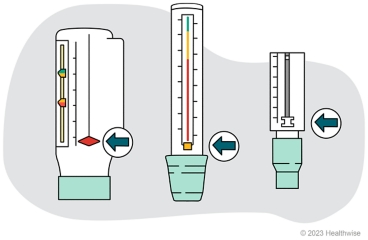
1. Set the pointer of the peak flow meter to 0 or the lowest number on the meter.
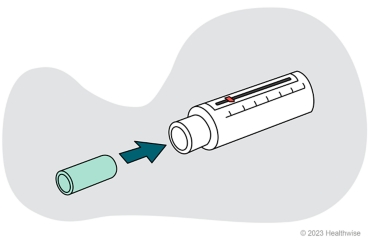
2. If there is a separate mouthpiece, attach it to the meter.
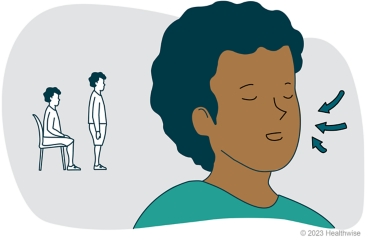
3. Have your child sit up or stand up as straight as possible and take a deep breath.
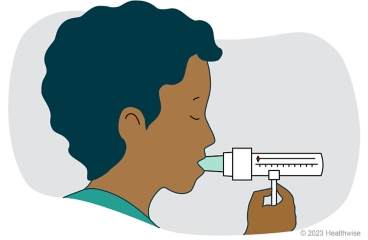
4. Have your child tightly close their lips around the mouthpiece, keeping their tongue away from the mouthpiece. Their fingers should be away from the number scale.
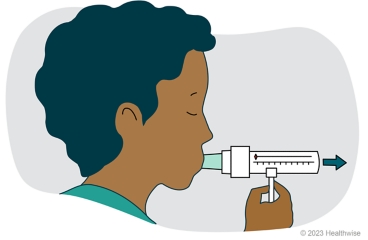
5. Have your child blow out as hard and as fast as possible.
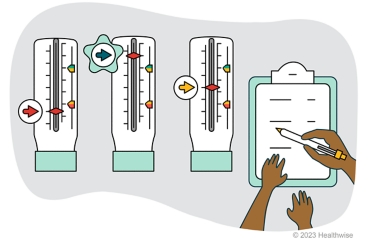
6. Note the number on the meter and write it down. Do the test 2 more times. The highest of these 3 tests is your child's peak flow.
How can you use peak flow to help manage your child's asthma?
Follow these tips to use peak flow to help your child manage asthma.
Find your child's personal best peak flow.
Keep a diary of your child's peak flow when their asthma is under control. The doctor will let you know how long to do this. Your child's personal best peak flow is the highest number in the diary.
Work with your child's doctor to make an asthma action plan. The doctor will add peak flow numbers to each zone in the action plan. The numbers are based on your child's personal best peak flow.
- Your child is in the green zone when their peak flow number is close to their personal best. It's where you want your child to be.
- Your child is in the yellow zone when their peak flow number is much lower than their personal best. Their asthma may be getting worse.
- Your child is in the red zone when their peak flow number is very low. It means danger. Get medical help.
Check your child's peak flow to find which zone your child is in.
Or you can use your child's symptoms and peak flow to find the zone. Check your child's peak flow as often as your doctor recommends.
Follow the steps in the action plan for the zone your child is in.
This can include what medicines to give and when to call for help.
Ask the doctor how often to recheck your child's personal best peak flow.
If it's changed, the numbers on your child's action plan may need to be changed.
Where can you learn more?
Go to http://www.healthwise.net/patientEd
Enter F345 in the search box to learn more about "Learning About Peak Flow Meters for Children".
Current as of: September 29, 2025
Author: Ignite Healthwise, LLC Staff
Clinical Review Board
All Ignite Healthwise, LLC education is reviewed by a team that includes physicians, nurses, advanced practitioners, registered dieticians, and other healthcare professionals.

